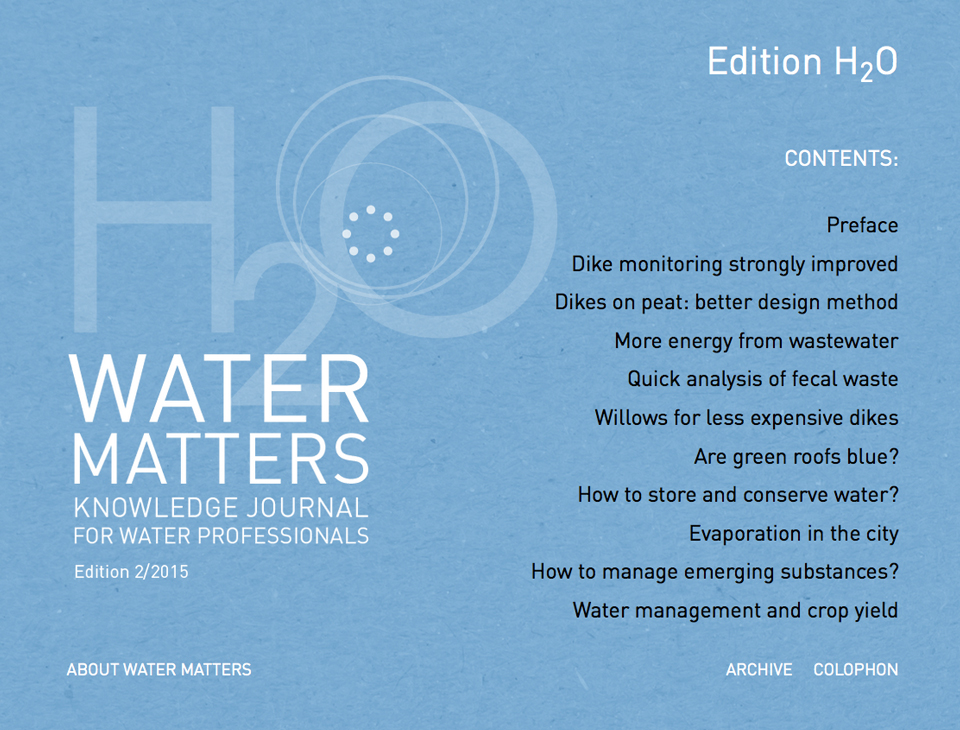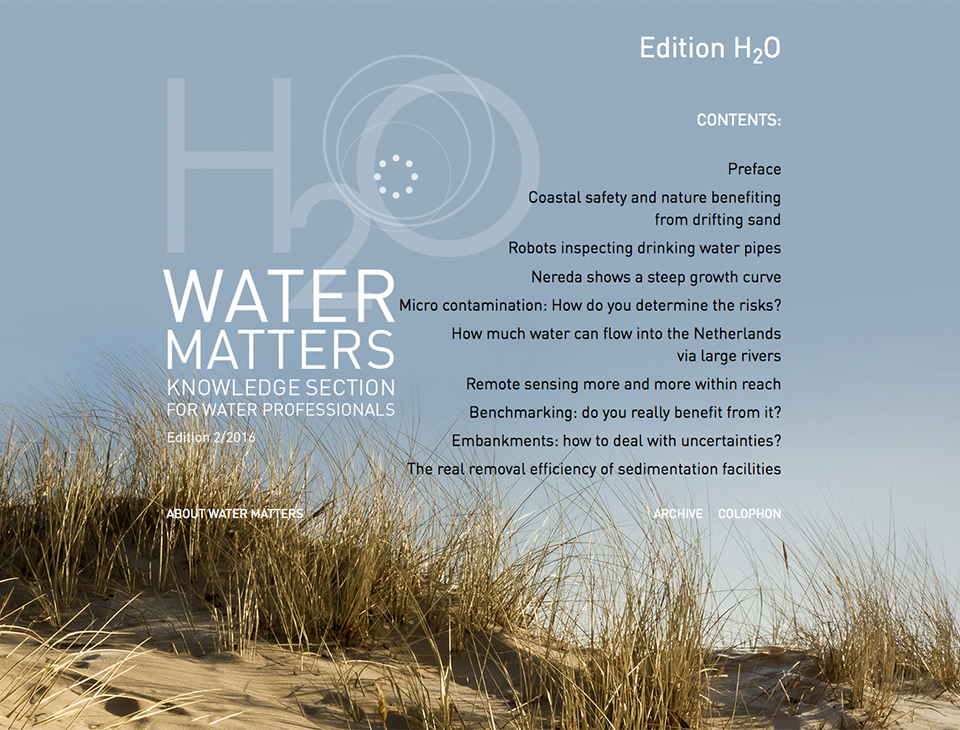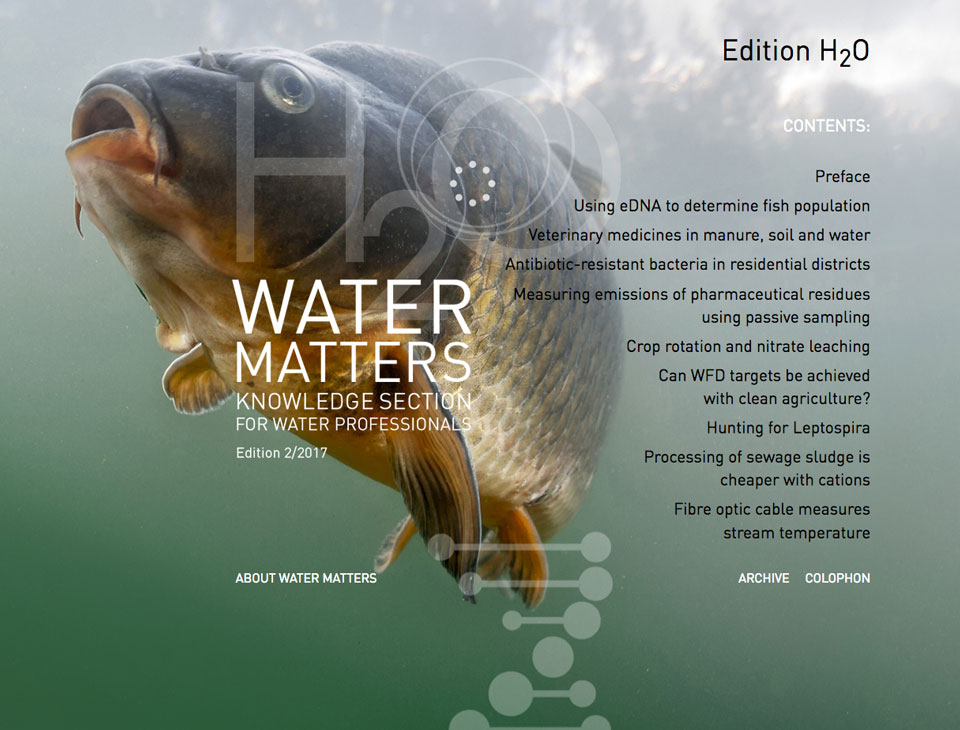Monitoring for a spatial targeting approach for nutrients
The Dutch government wishes to resolve nutrient problems with region specific mitigation actions. However, without insight into the hotspots and hot moments of nutrient losses such a spatial targeted approach is unlikely to succeed. Region specific mitigation also requires region specific monitoring. Detailed measurements in space and time have an added value.
During the past thirty years, the water quality in agricultural areas has improved, but still not enough to meet the goals for the Nitrates Directive and the Water Framework Directive. The government makes a case for a spatial targeting approach for resolving the nutrient problem. However, such a region specific approach also requires region specific monitoring.
Within the standard monitoring networks for surface water quality, measurements are taken on a monthly basis at downstream locations where nutrients from a large catchment come together. On the basis of those monitoring data, it is generally not possible to univocally establish the sources of the nutrients. Without a clear image of the
hotspots and
hot moments of nutrient losses, it is not possible to take focused and effective measures.
The aim of this research is to explore the possibilities for supporting an a spatial targeting approach for nutrients with new monitoring strategies. On the basis of various measurement campaigns, we show the added value of detailed measurements in space and time for raising awareness, for law enforcement and for defining frameworks for action.
Methods
We use measuring campaigns in the Hupselse beek (Gelderland), the Lage Vaart (Flevoland), the Elsener beek (Overijssel), the Groote Molenbeek (Limburg), the Salto A (Seeland, Denmark) and the Grote Heideloop (Antwerp, Belgium). There have already been publications about the measurements in the Hupselse beek and in the Lage Vaart in the theses of Rozemeijer (2010) and Van der Grift (2017).
For more insight into sources, routes and biochemical processes, the temporal and spatial variations in surface water nutrient concentrations were measured by continuous monitoring and routings, respectively. For continuous water quality measurements, sensors are needed which remain stable under all field conditions and do not need maintenance too frequently. The continuous phosphorus measurements (P-total and PO4) were taken with the Phospax Sigma auto-analyser by Hach. The continuous nitrate measurements were taken with the Nitratax UV sensor by Hach.
For routings, it is important to be able to measure quickly and at many places. For the nitrate routings in this study, use was made of the Nitrate app by Deltares. In Flanders, nitrate concentrations were measured with a portable reflectometer RQ flex 10 and accompanying test strips (Reflectoquant ® by Merck). Supplementary to this, in the autumn nitrate residue measurements of agricultural fields were taken up to a depth of 90 cm.
RESULTS
Variations in time
Continuous water quality measurements unlock a wealth of information which remains hidden in the case of standard monthly measurements. For instance, high-frequency measurements of P-total in the Hupselse beek (Figure 1a) show that concentrations during flow peaks can increase by a factor 100. The peaks are mainly caused by the supply of phosphate-rich sediment, which builds up during dry periods in the catchment as a result of the bonding of phosphate and iron oxides and hydroxides, being washed away. Overland flow also sometimes plays a role; continuous EC and Ca measurements at the same location show that during flow peaks up to 67% of the discharge consists of fresh precipitation water.
In the Lage Vaart, mainly the difference in hydrology ensures a completely different dynamics in continuously measured P-total concentrations. The measurements were taken at the pumping station De Blocq van Kuffeler, where water is pumped from a mainly agricultural cachment into the Markermeer Lake. When the pumps are switched on, the P-total concentrations become approximately twice as high. The concentration peaks are far less high than in the Hupselse beek, but the summer concentrations in the Lage Vaart are much higher (0.6 mg/l vs. 0.05 mg/l). In polder systems with low flow rates, the phosphate-rich sediment does not reach the pumping station for a large part. The phosphate binds to iron or iron(hydr)oxides and is temporarily stored in the sediments. During dry and warm periods in summer with oxygen depletion in the sediments, this phosphorus is released to the water column again.
In addition, the dynamics in continuously measured nitrate concentrations give an insight into the transport processes. Figure 1c shows that the nitrate concentrations in the Lage Vaart increase in the autumn, at the same time that the subsurface tube drains in the area become active again. As a result of cracks in the clay soil, nitrate can quickly reach the drains via preferential flow through these cracks. This fast transport route typically results in a concentration peak at the pumping station 5 days after a rain shower. The variations in nitrate concentrations in the Lage Vaart are generally easy to predict on the basis of precipitation data (see the time series models in Figure 1c). During a period of frost in January, the concentrations are lower than expected; the precipitation in the form of snow does not lead to drainage. At the end of February, the nitrate concentrations are considerably higher than expected. These high nitrate peaks are the result of the large scale manure spreading in cold and wet conditions, just after the end of the winter ban on manure spreading.
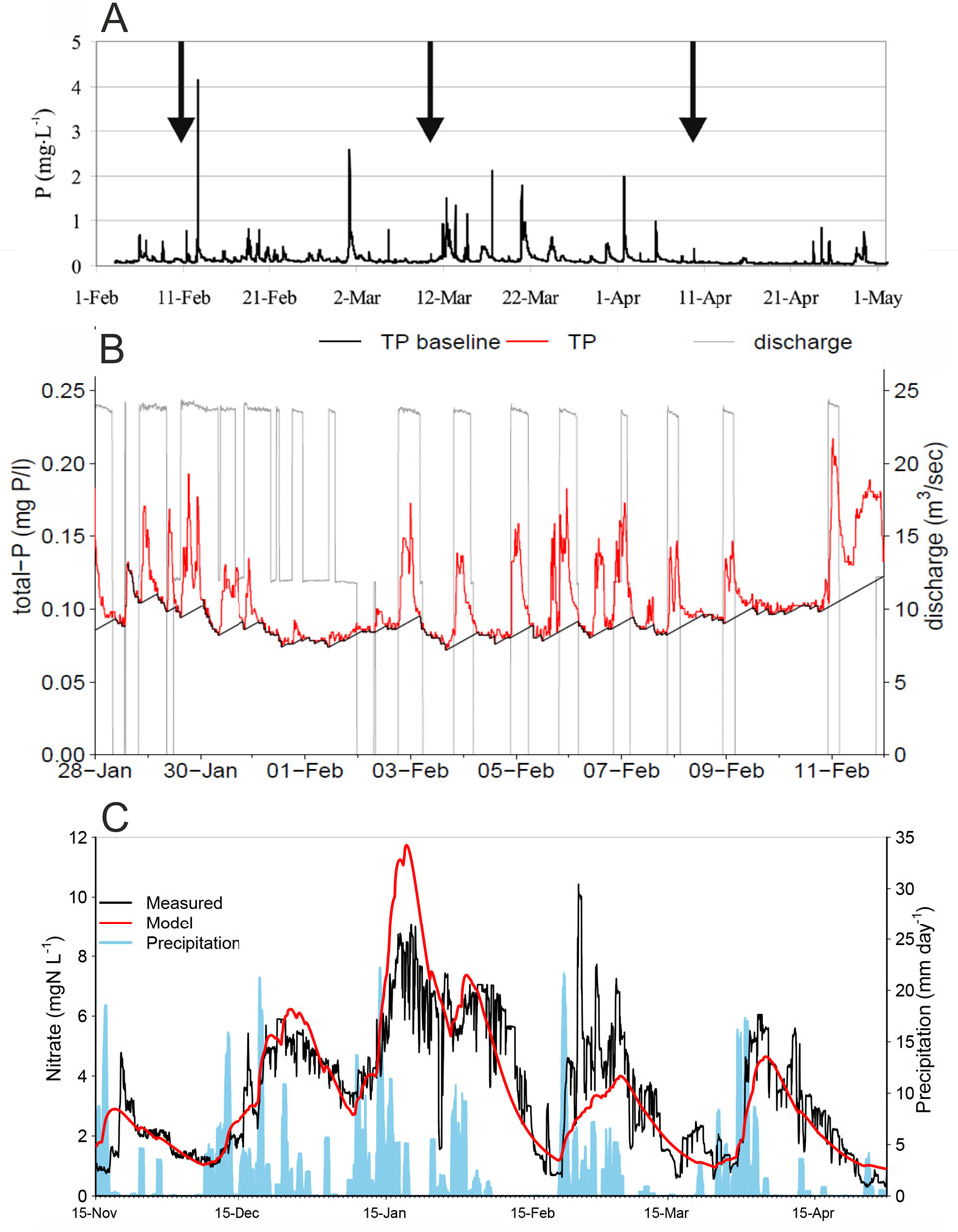 Figure 1. Temporal variations in nutrient concentrations; A: Continuously measured P-total concentrations in the Hupselse beek (the arrows illustrate a monthly sampling scheme); B: continuously measured P-total concentrations and discharge at pumping station De Blocq van Kuffeler; C: continuously measured nitrate concentrations at pumping station De Blocq van Kuffeler (Flevoland), the time series model prediction of the nitrate concentration is shown in red.
Figure 1. Temporal variations in nutrient concentrations; A: Continuously measured P-total concentrations in the Hupselse beek (the arrows illustrate a monthly sampling scheme); B: continuously measured P-total concentrations and discharge at pumping station De Blocq van Kuffeler; C: continuously measured nitrate concentrations at pumping station De Blocq van Kuffeler (Flevoland), the time series model prediction of the nitrate concentration is shown in red.
Variations in space
The detailed measuring of concentrations in the headwaters of catchments can give a good picture of hotspots of nutrient leaching. Figure 2a gives an example of a nitrate routing in the Elsenerbeek on 14 February 2017. The ditch with high nitrate concentrations (red/orange points on the map) drains two farms where high nitrate leaching occurs.
Via routings, nutrient inputs from unknown spills can also be detecteded. Figure 2b shows for instance detailed measurements where, in a spill into the Groote Molenbeek from a greenhouse, concentrations above 200 mg/l NO3-N were found. A routing can also provide information about the route of nutrients to the surface water. Figure 2c gives the result of a measuring campaign on 19 April 2017 in the Salto A in Denmark. Within 3 hours, it was determined there that the drains were the main route for nitrate.
Similar examples can also be found in Flanders. Figure 3 show nitrate measurements from 16 February 2017 in the arable farming region Grote Heideloop (Province of Antwerp). The concentrations vary from 5 mg NO3/L to 228 mg NO3/L. On the basis of concentration measurements in ditches, it cannot always be determined which agricultural fields have the most influence. For this reason, in autumn 2016 nitrate residues were also measured in risk crops and they varied from 26 to 320 kg N/ha (see Figure 3). The results can be related to not always efficient fertilization practices in combination with the differences in nitrogen uptake efficiencies between crops.
 Figure 2. Examples of detailed measurements in catchments: a: routing in the Elsener beek catchment; b: localising unknown spills at Horst (Limburg); c: concentrations in tube drain effluent versus concentrations in the brook (Salto A) at Slagelse, Denmark.
Figure 2. Examples of detailed measurements in catchments: a: routing in the Elsener beek catchment; b: localising unknown spills at Horst (Limburg); c: concentrations in tube drain effluent versus concentrations in the brook (Salto A) at Slagelse, Denmark.
 Figure 3. Example of the Flemish approach; detailed measurements in the Grote Heideloop of nitrate concentrations in surface water (figures on the map) in combination with measurements of nitrate residues in agricultural soils (coloured legend).
Figure 3. Example of the Flemish approach; detailed measurements in the Grote Heideloop of nitrate concentrations in surface water (figures on the map) in combination with measurements of nitrate residues in agricultural soils (coloured legend).
Discussion
The purpose of this article was to deal with the possibilities for support of an area-focused approach to nutrients with new monitoring strategies. Continuous measurements make it possible to detect incidental peak loads (hot moments) and to quantify the influence of sources, routes and biochemical processes. With routings, hotspots of nutrient losses can be charted and the contributions from various leaching and drainage routes can be quantified. With these area-focused measuring strategies, an interpretation can be given to measuring for raising awareness, for law enforcement and for defining a framework for action.
Measuring for raising awareness
Farmers cannot see where and when nutrients leak from their land. As a result of insight into the concentrations on their own land, the willingness to think of measures along with water authorities is expected to increase. With routings by the water authority, possibly supplemented by measurements by farmers or volunteers, concentrations in the small headwaters of catchments can be depicted.
Measuring for law enforcement
Continuous monitoring and carrying out routings gives supportive information for enforcing bodies. With routings, enforcing bodies can trace locations where many nutrients leach. Continuous measuring systems can give warning signals for unexpected high concentrations that form a reason for inspection and further measurements in the area.
Measuring for a framework of action
In order to find out what water quality measurements are effective, a good picture of sources, routes and processes is necessary. Routings and continuous measurements often provide a great deal of information in this area. If continuous measurements show that the large-scale first fertilization in February leads to the large quantities of nutrients in the water (Figure 1c), then the best option is to invest in storage capacity for manure. If routings show that a few fields contribute the most nitrate (Figure 2a), a wet buffer strip and/or a denitrification reactor could be the most cost-effective measure.
Conclusion
In various projects, it was examined how innovative measuring technology and smart measuring strategies can help a spatial targeting approach for realizing the goals of the Nitrate Directive and the Water Framework Directive. On the basis of continuous measurements, at various locations it was established when and via which routes nutrients end up in the surface water. From water quality measurements in the headwaters of Dutch and Belgian agricultural regions, it appears how considerable the spatial differences in nitrate concentrations can be. In many catchments, a few hotspots can be the cause of too high nutrient concentrations and the water quality objectives can be achieved with a very focused approach. The extra measuring costs can be expected to be more than earned back, because there will be less expenses for measures in the wrong places.
Joachim Rozemeijer
(Deltares, afdeling bodem- en grondwaterkwaliteit (soil and groundwater quality department))
Bas van der Grift
(Deltares, afdeling bodem- en grondwaterkwaliteit (soil and groundwater quality department))
Joris de Nies
(Coördinatiecentrum Voorlichting en Begeleiding Duurzame Bemesting (Information and Support Sustainable Fertilization Coordination Centre, Flanders))
Summary
The government wishes to resolve the problems with too high concentrations of nutrients in agricultural regions with region specific mitigation actions. Without detailed monitoring in space and time, such a spatial targeting approach is unlikely to succeed. Without a clear picture of the hotspots and hot moments of nutrient losses, it is not possible to take focused and effective measures. This article presents examples from the Netherlands and Flanders in which measurements of temporal variations in nutrient concentrations (continuous monitoring) and spatial variations (routings) were carried out. These measurements provide much direct information about sources, routes and processes and help in choosing the right measures at the right spot.
References
Rozemeijer, J.C., 2010. Dynamics in groundwater and surface water quality. Thesis, University of Utrecht.
Van der Grift, B., 2017. Geochemical and hydrodynamic phosphorus retention mechanisms in lowland catchments. Thesis, University of Utrecht.
D’Haene, K., Salomez, J., Verhaeghe M. , Van de Sande, T., De Nies, J. , De Neve, S., Hofman, G., 2018. Can optimum yield and quality of vegetables be reconciled with low residual soil mineral nitrogen at harvest? Scientia Horticulturae 233 (2018) 78–89.
^ Back to start







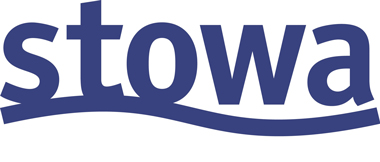

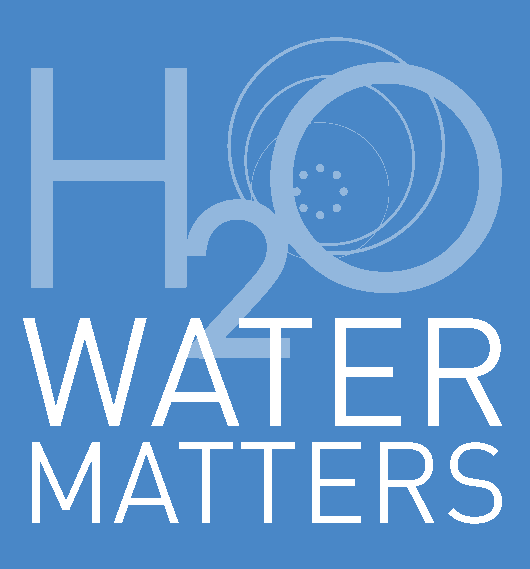

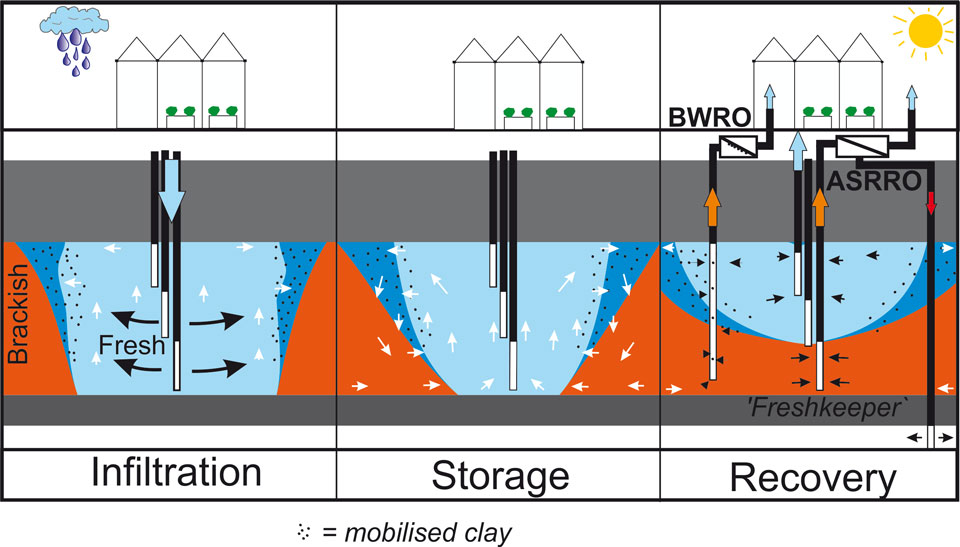
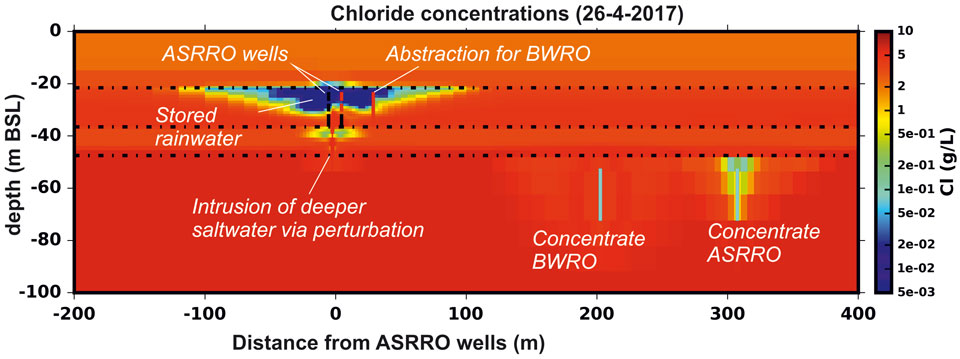




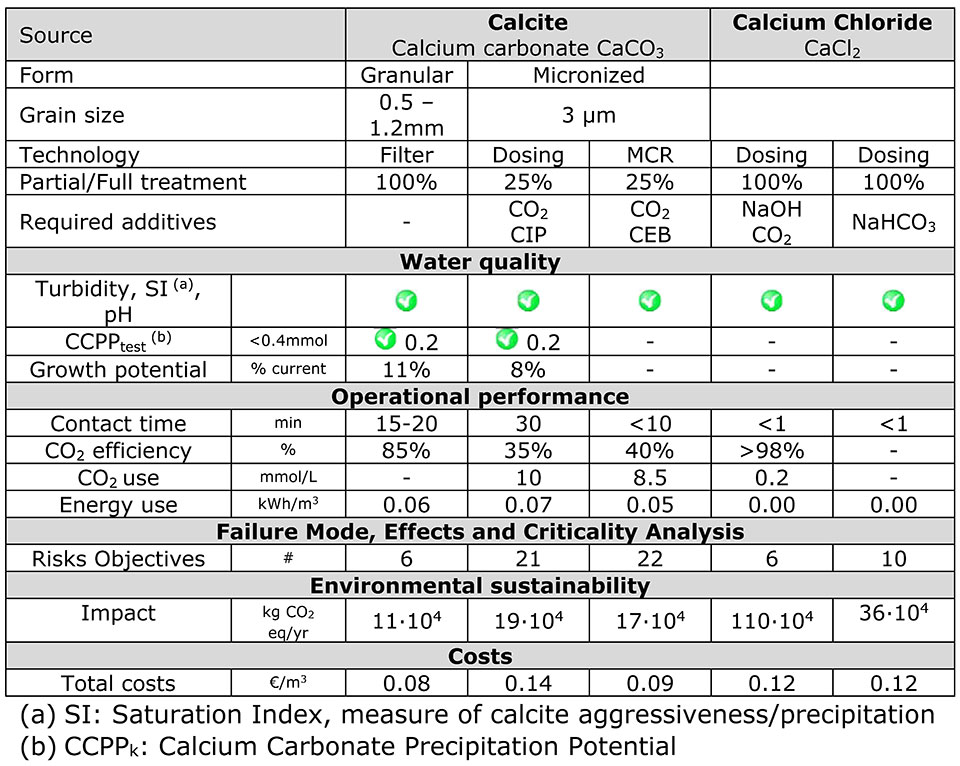













 Figure 3. Example of the Flemish approach; detailed measurements in the Grote Heideloop of nitrate concentrations in surface water (figures on the map) in combination with measurements of nitrate residues in agricultural soils (coloured legend).
Figure 3. Example of the Flemish approach; detailed measurements in the Grote Heideloop of nitrate concentrations in surface water (figures on the map) in combination with measurements of nitrate residues in agricultural soils (coloured legend).







